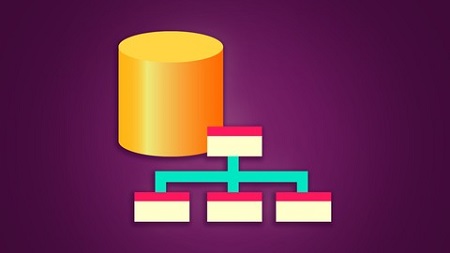
English | MP4 | AVC 1280×720 | AAC 48KHz 2ch | 6.5 Hours | 1.35 GB
Connect your applications to a SQL Server database
Entity Framework is an Object / Relational Mapper (O/RM) that helps you read and write data from and to a database. In this course, Mosh, teaches you the core concepts of Entity Framework through a series of clear, concise and hands-on lectures.
Whether you’re new to Entity Framework, or been using it for a while but are looking for a comprehensive course with a clean structure to fill the missing parts, you’re going to love this course.
By the end of watching this course, you’ll be able to:
- Understand the differences between code-first and database-first workflows
- Build a domain model using database-first workflow
- Build a domain model using code-first workflow (with a new or an existing database)
- Use code-first migrations to upgrade or downgrade your database
- Override code-first conventions (using data annotations and fluent API)
- Query data using LINQ (using query syntax and extension methods)
- Use eager loading, lazy loading and explicit loading effectively
- Add, update and remove objects
- Use additional tools to profile and troubleshoot your applications
- Understand what the repository pattern is, why and when to use it and how
- Apply best practices with Entity Framework
Unlike other books or courses that teach Entity Framework like a manual, Mosh walks you through real-world scenarios using his extensive experience in the field. Not only does he teach you the fundamentals of Entity Framework, he’ll also teach you best practices along the way.
In each section, you’ll find exercises to help you reinforce the materials. These exercises have been chosen from real-world scenarios to help you prepare for the challenges of the real-world. Also, some sections include cheat sheets so you can quickly review what you learn in that section.
This course is produced with Entity Framework 6. If you’re using an older version of Entity Framework, you can still take this course as long as your version of Entity Framework is 4.1 or higher.
Table of Contents
Introduction
1 About this Course
2 About Me
3 Asking Questions
Getting Started
4 Introduction
5 What is Entity Framework
6 Workflows
7 Demo Database-First Workflow
8 Demo Code-First Workflow
9 Database-First or Code-First
10 Summary
Building a Model using Database-First Workflow
11 Introduction
12 Exercises
13 Summary
14 Setting up the Database
15 A Quick Tour of EDMX Designer
16 Uncovering the EDMX
17 Connection Strings
18 Dealing with Database Changes
19 Importing Stored Procedures
20 Function Imports
21 Working with Enums
Building a Model using Code-First Workflow
22 Introduction
23 Seeding Database
24 Exercises
25 Summary
26 Code First with a New Database
27 Code First with an Existing Database
28 Migrations Enabling Migrations
29 Migrations Adding a New Class
30 Migrations Modifying an Existing Class
31 Migrations Deleting an Existing Class
32 Migrations Recovering from Mistakes
33 Migrations Downgrading a Database
Overriding Code-First Conventions
34 Introduction
35 Exercises
36 Summary
37 Overriding Conventions
38 Data Annotations
39 Demo Data Annotations
40 Fluent API Basics
41 Fluent API Relationships
42 Demo Fluent API
43 Demo Fluent API (Advanced Configurations)
44 Organizing Fluent API Configurations
Querying Data using LINQ
45 Introduction
46 Summary
47 Introduction to LINQ
48 LINQ in Action
49 LINQ Syntax
50 LINQ Extension Methods
51 LINQ Extension Methods Additional Methods
52 Deferred Execution
53 IQueryable Explained
54 Exercises
Loading Related Objects
55 Introduction
56 Lazy Loading
57 N + 1 Problem
58 Eager Loading
59 Explicit Loading
60 Exercises
61 Summary
Updating Data
62 Introduction
63 Overview of Changing Data
64 Adding objects
65 Updating objects
66 Removing objects
67 Working with Change Tracker
68 LINQPad
69 Exercises
70 Summary
Using Entity Framework in Your Applications
71 Introduction
72 Repository Pattern
73 Implementing the Repository Pattern
74 Structuring Your Applications
75 ASP.NET MVC Example
76 WPF Example
77 Summary
Conclusion
78 Final Words
79 Coupon to My Other Courses
Resolve the captcha to access the links!